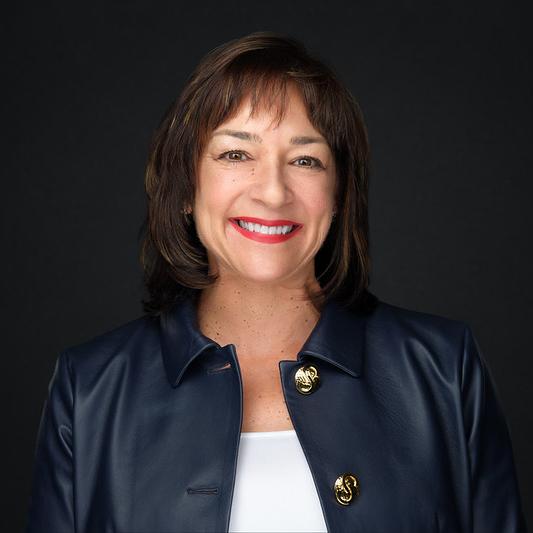
Strategies for Effective Cross-Border Capital Equipment Investment
-
bookmark
-
print



Capital investment is often a key component of an international expansion. Even when that expansion involves related businesses operating both in the U.S. and Canada, companies need to understand how that investment best serves the business’ overall strategy.
Given how critical capital allocation is, particularly in the current environment, working with a single North American relationship manager that’s familiar with your financial needs and strategic goals can help you achieve greater efficiencies, consistency of structures, and certainty of execution in the cross-border equipment financing process.
Strategic Alignment
Just as cross-border expansion is a strategic decision, so is how you acquire equipment to facilitate that expansion. We’ve had discussions with several CFOs who lament that these types of decisions are often made without consideration for an organization’s capital expenditure strategy. They’re often left managing a disparate collection of projects with varied financing structures.
Working with a partner that can offer flexibility in financing solutions can help bring these decisions into alignment. That flexibility is especially crucial now as the changing landscape calls for companies to respond to the following:
-
What is the appropriate mix of fixed and floating interest rate structures?
-
Should financing tenors align with equipment useful life?
-
Is equipment ownership or usage more important?
-
Can financing repayment schedules take seasonal or project-based cash inflows into consideration?
An equipment finance provider should have answers to all these questions based on their knowledge of your business, as well as offer options such as hybrid transactions, and the flexibility to extend an equipment lease line or interim funding agreements.
Knowledge of local markets in both the U.S. and Canada is also essential. While the U.S. and Canadian equipment finance landscapes share many similarities, there are differences on a more granular level. That also applies within the two countries: tax laws may differ from state to state and province to province, for example. A partner with the local expertise to help you navigate those issues can be invaluable in terms of saving time and costs.
Consistency and Certainty
Without a comprehensive, integrated North American solution to your equipment finance needs, many companies finance their projects in a way that's not optimal, or they opt against completing a cross-border capital investment altogether.
Companies that don’t have that type of lending relationship will likely have to bring in a separate lender for equipment financing. In many cases, because they’re working with a company unfamiliar with their operation, financials, and their unique requirements, the execution often ends up being uncertain, and the financing structure may be inconsistent with their financial needs. In these cases, we’ve seen companies decide to cut back on their capital investments or use cash already designated for other alternatives—not an ideal option in an environment where a premium is placed on optionality. Furthermore, having inconsistent financing structures can negatively impact your operations several years down the road, depending on your longer-term capex strategy.
Before embarking on capital equipment investments for a cross-border project, it’s helpful to consider the following questions:
-
Is the majority of your capital spend required in the U.S. or Canada? You’ll need to consider both where you’re best able to allocate capital and the financing structure differences in the two countries.
-
Are you partnering with a company that will be able to grow with your business?
-
Do you have an integrated capital structure strategy for both the U.S. and Canada?
Efficiency, certainty of execution and structural consistency: These elements are important for your business both now and in the future when it comes to capital investments. Most companies plan their capital investments on both an annual basis and a three-to-five-year outlook. That’s why when you have a single, “one source” equipment financing partner that’s committed to supporting your growth through all business and economic cycles, you’ll have more certainty in planning for the future, whether you’re looking to finance a specific project or support an expansion plan.
Employing different equipment finance providers in the U.S. and Canada leads to managing multiple relationships, inconsistent financing structures, uneven execution, and less certainty in completing your projects. The ability to plan, strategize and execute your equipment needs with a provider with cross-border expertise allows you to have a full North American solution for financing your capital investments.
Wendy Carroll, Head, Equipment Finance & Leasing, responsible for leading a highly experienced team of Equipment Finance professionals across Canada, and Thomas Sbordone, Managing Director, Equipment Finance at BMO, contributed to this article.

Wendy Carroll
Head, Equipment Finance & Leasing
438-992-6258
Wendy Carroll is Head, Equipment Finance & Leasing responsible for leading a highly experienced team of Equipment Finance professionals across Canada. Wend…(..)
View Full Profile >Capital investment is often a key component of an international expansion. Even when that expansion involves related businesses operating both in the U.S. and Canada, companies need to understand how that investment best serves the business’ overall strategy.
Given how critical capital allocation is, particularly in the current environment, working with a single North American relationship manager that’s familiar with your financial needs and strategic goals can help you achieve greater efficiencies, consistency of structures, and certainty of execution in the cross-border equipment financing process.
Strategic Alignment
Just as cross-border expansion is a strategic decision, so is how you acquire equipment to facilitate that expansion. We’ve had discussions with several CFOs who lament that these types of decisions are often made without consideration for an organization’s capital expenditure strategy. They’re often left managing a disparate collection of projects with varied financing structures.
Working with a partner that can offer flexibility in financing solutions can help bring these decisions into alignment. That flexibility is especially crucial now as the changing landscape calls for companies to respond to the following:
-
What is the appropriate mix of fixed and floating interest rate structures?
-
Should financing tenors align with equipment useful life?
-
Is equipment ownership or usage more important?
-
Can financing repayment schedules take seasonal or project-based cash inflows into consideration?
An equipment finance provider should have answers to all these questions based on their knowledge of your business, as well as offer options such as hybrid transactions, and the flexibility to extend an equipment lease line or interim funding agreements.
Knowledge of local markets in both the U.S. and Canada is also essential. While the U.S. and Canadian equipment finance landscapes share many similarities, there are differences on a more granular level. That also applies within the two countries: tax laws may differ from state to state and province to province, for example. A partner with the local expertise to help you navigate those issues can be invaluable in terms of saving time and costs.
Consistency and Certainty
Without a comprehensive, integrated North American solution to your equipment finance needs, many companies finance their projects in a way that's not optimal, or they opt against completing a cross-border capital investment altogether.
Companies that don’t have that type of lending relationship will likely have to bring in a separate lender for equipment financing. In many cases, because they’re working with a company unfamiliar with their operation, financials, and their unique requirements, the execution often ends up being uncertain, and the financing structure may be inconsistent with their financial needs. In these cases, we’ve seen companies decide to cut back on their capital investments or use cash already designated for other alternatives—not an ideal option in an environment where a premium is placed on optionality. Furthermore, having inconsistent financing structures can negatively impact your operations several years down the road, depending on your longer-term capex strategy.
Before embarking on capital equipment investments for a cross-border project, it’s helpful to consider the following questions:
-
Is the majority of your capital spend required in the U.S. or Canada? You’ll need to consider both where you’re best able to allocate capital and the financing structure differences in the two countries.
-
Are you partnering with a company that will be able to grow with your business?
-
Do you have an integrated capital structure strategy for both the U.S. and Canada?
Efficiency, certainty of execution and structural consistency: These elements are important for your business both now and in the future when it comes to capital investments. Most companies plan their capital investments on both an annual basis and a three-to-five-year outlook. That’s why when you have a single, “one source” equipment financing partner that’s committed to supporting your growth through all business and economic cycles, you’ll have more certainty in planning for the future, whether you’re looking to finance a specific project or support an expansion plan.
Employing different equipment finance providers in the U.S. and Canada leads to managing multiple relationships, inconsistent financing structures, uneven execution, and less certainty in completing your projects. The ability to plan, strategize and execute your equipment needs with a provider with cross-border expertise allows you to have a full North American solution for financing your capital investments.
Wendy Carroll, Head, Equipment Finance & Leasing, responsible for leading a highly experienced team of Equipment Finance professionals across Canada, and Thomas Sbordone, Managing Director, Equipment Finance at BMO, contributed to this article.
What to Read Next.
Eyes on Canada after U.S. Downgrade
Robert Kavcic | August 04, 2023 | Economic Insights, Business Strategy

Fitch downgraded the United States’ credit rating to AA+ from AAA, somewhatof a surprise move, yet, not all that surprising. One doesn’t …
Continue Reading>Related Insights
Tell us three simple things to
customize your experience






Banking products are subject to approval and are provided in Canada by Bank of Montreal, a CDIC Member.
BMO Commercial Bank is a trade name used in Canada by Bank of Montreal, a CDIC member.
Please note important disclosures for content produced by BMO Capital Markets. BMO Capital Markets Regulatory | BMOCMC Fixed Income Commentary Disclosure | BMOCMC FICC Macro Strategy Commentary Disclosure | Research Disclosure Statements
BMO Capital Markets is a trade name used by BMO Financial Group for the wholesale banking businesses of Bank of Montreal, BMO Bank N.A. (member FDIC), Bank of Montreal Europe p.l.c., and Bank of Montreal (China) Co. Ltd, the institutional broker dealer business of BMO Capital Markets Corp. (Member FINRA and SIPC) and the agency broker dealer business of Clearpool Execution Services, LLC (Member FINRA and SIPC) in the U.S. , and the institutional broker dealer businesses of BMO Nesbitt Burns Inc. (Member Canadian Investment Regulatory Organization and Member Canadian Investor Protection Fund) in Canada and Asia, Bank of Montreal Europe p.l.c. (authorised and regulated by the Central Bank of Ireland) in Europe and BMO Capital Markets Limited (authorised and regulated by the Financial Conduct Authority) in the UK and Australia and carbon credit origination, sustainability advisory services and environmental solutions provided by Bank of Montreal, BMO Radicle Inc., and Carbon Farmers Australia Pty Ltd. (ACN 136 799 221 AFSL 430135) in Australia. "Nesbitt Burns" is a registered trademark of BMO Nesbitt Burns Inc, used under license. "BMO Capital Markets" is a trademark of Bank of Montreal, used under license. "BMO (M-Bar roundel symbol)" is a registered trademark of Bank of Montreal, used under license.
® Registered trademark of Bank of Montreal in the United States, Canada and elsewhere.
™ Trademark of Bank of Montreal in the United States and Canada.
The material contained in articles posted on this website is intended as a general market commentary. The opinions, estimates and projections, if any, contained in these articles are those of the authors and may differ from those of other BMO Commercial Bank employees and affiliates. BMO Commercial Bank endeavors to ensure that the contents have been compiled or derived from sources that it believes to be reliable and which it believes contain information and opinions which are accurate and complete. However, the authors and BMO Commercial Bank take no responsibility for any errors or omissions and do not guarantee their accuracy or completeness. These articles are for informational purposes only.
Bank of Montreal and its affiliates do not provide tax, legal or accounting advice. This material has been prepared for informational purposes only, and is not intended to provide, and should not be relied on for, tax, legal or accounting advice. You should consult your own tax, legal and accounting advisors before engaging in any transaction.
Third party web sites may have privacy and security policies different from BMO. Links to other web sites do not imply the endorsement or approval of such web sites. Please review the privacy and security policies of web sites reached through links from BMO web sites.
Please note important disclosures for content produced by BMO Capital Markets. BMO Capital Markets Regulatory | BMOCMC Fixed Income Commentary Disclosure | BMOCMC FICC Macro Strategy Commentary Disclosure | Research Disclosure Statements




